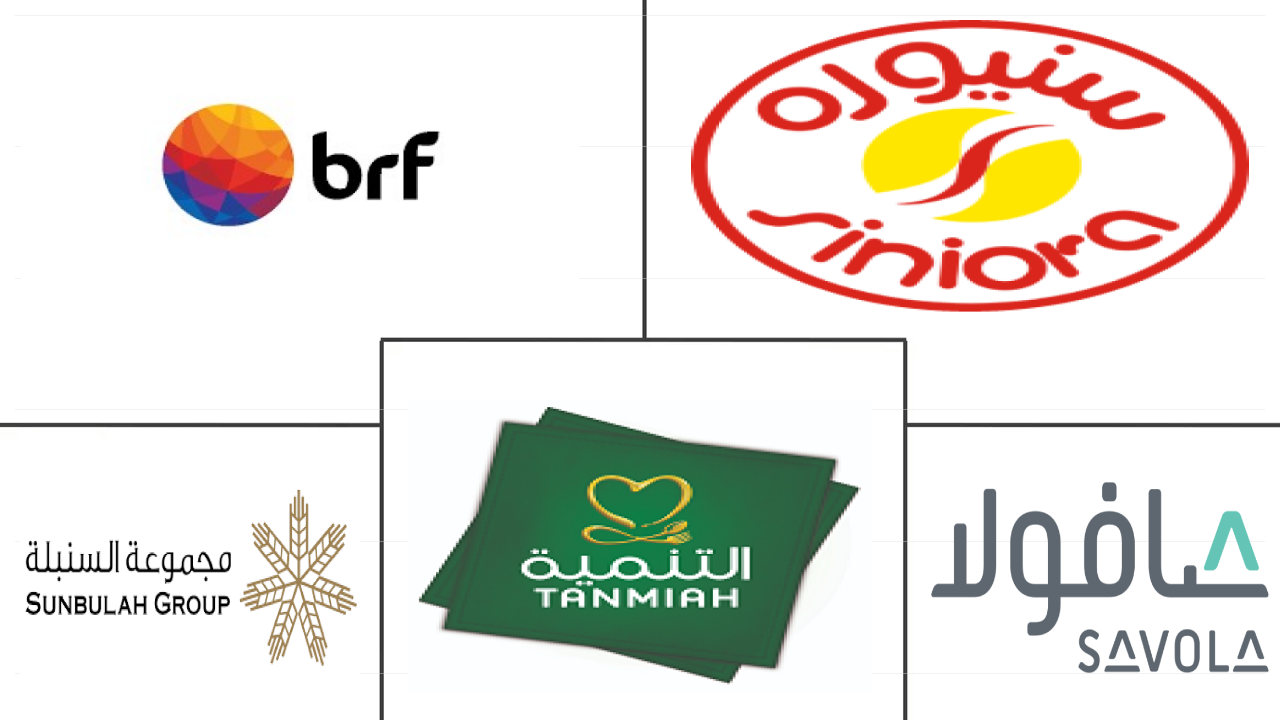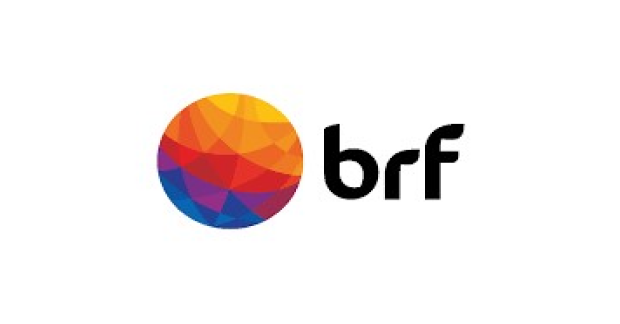Market Size of gcc edible meat Industry
|
|
Study Period | 2017 - 2029 |
|
|
Market Size (2024) | USD 11.52 Billion |
|
|
Market Size (2029) | USD 12.57 Billion |
|
|
Largest Share by Type | Poultry |
|
|
CAGR (2024 - 2029) | 1.75 % |
|
|
Largest Share by Country | Saudi Arabia |
Major Players |
||

|
||
|
*Disclaimer: Major Players sorted in no particular order |
GCC Edible Meat Market Analysis
The GCC Edible Meat Market size is estimated at 11.52 billion USD in 2024, and is expected to reach 12.57 billion USD by 2029, growing at a CAGR of 1.75% during the forecast period (2024-2029).
11.52 Billion
Market Size in 2024 (USD)
12.57 Billion
Market Size in 2029 (USD)
4.95 %
CAGR (2017-2023)
1.75 %
CAGR (2024-2029)
Largest Segment by Type
65.99 %
value share, Poultry, 2023
Product consistency, surge in regional production and higher protein/lower fat content are some of the major factors influencing the higher poultry consumption in the region.
Largest Segment by Country
55.41 %
value share, Saudi Arabia, 2023
Poultry and beef are Saudi Arabia's choice of meat. The local regulatory bodies are encouraging local producers to boost meat production to cater to the surging demand.
Fastest-growing Segment by Type
1.91 %
Projected CAGR, Mutton, 2024-2029
The rise of expat population and tourism in the region is driving the demand for mutton meat. Fresh and chilled mutton is likely to be the fastest-growing form in the region.
Fastest-growing Segment by Country
2.07 %
Projected CAGR, Oman, 2024-2029
The surging demand supported by constant investments to boost the local production of edible meat is projected to drive the Omani market, mainly through off-trade channel.
Leading Market Player
3.43 %
market share, BRF S.A., 2022

Other than the extensive product portfolio incorporating all forms and types of edible meat, the company's broad consumer reach makes it a leading player in the market.
High ex-pat population in the region drives the demand for various meat products
- Poultry is the most consumed meat type in the GCC region. The sales of poultry meat in the region rose by 15.95% in value from 2019 to 2022. Among all poultry birds, chicken meat dominated in the region compared to turkey, duck, and goose. Several countries are investing in improving poultry meat production. Pork is banned in most GCC countries under Islamic dietary law. However, consuming pork is not illegal for non-Muslims in the UAE and Bahrain. These two countries import pork sold in authorized food service establishments and retail outlets.
- Beef is anticipated to grow during the forecast period, registering a CAGR of 1.93% by value. Bahrain has the highest per capita beef consumption of 15.80 kg in 2023. The country relies on beef imports from New Zealand, Pakistan, and the United Arab Emirates. Most fresh meat cuts available through online channels are New Zealand's beef sirloin, topside steak, and silverside steak. The country has also seen an increase in the ex-pat population from Western and Asian nations over the last two decades, leading to a more diverse range of gastronomic preferences, including food items like hamburgers. Similarly, among red meat, consumption is primarily dominated by beef due to the religious affiliations of Bahrain's population.
- By country, Saudi Arabia has the highest consumption of edible meat, with a share of 20.42% by value of the GCC edible meat market. The country is increasing its meat production facilities to gain self-sufficiency in meat production. For instance, Saudi Arabia plans to invest USD 5 billion to boost poultry production as the Kingdom aims to achieve a poultry meat self-sufficiency rate of 80% by 2025.
- Bahrain is the fastest-growing edible meat market in the GCC, and it is expected to register a CAGR of 4.14%, by value, during the forecast period. In 2020, Bahrain witnessed an influx of around 48.9% of ex-pats from Asia and Western countries, resulting in foods like hamburgers and fried chicken becoming more popular with Bahraini consumers. The edible meat segment is largely dominated by poultry, mainly due to the religious affiliation of Bahraini consumers.
- In the United Arab Emirates, the poultry demand is rising. From 2018 to 2021, poultry meat registered a growth of 32.08% by value. Amid increasing global food prices, poultry remains a comparatively cheap source of animal protein in the United Arab Emirates. As of July 2021, poultry prices were 0.5% lower than last year's and declined every month in 2021 since record high prices in 2020. As a result of lower poultry prices and a recovery in tourism, travel, and business from the impact of the COVID-19 pandemic, the demand for poultry meat increased. The consumption was registered at 441,000 metric ton in 2021, and it is expected to increase in 2022.
- Oman is the second-fastest-growing edible meat market in the GCC, and it is expected to register a CAGR of 3.24%, by value, during the forecast period. The Oman Investment Authority supported various edible meat projects in the country to increase its self-sufficiency and expand the market. These projects reached meat self-sufficiency of 46% in 2022 from 37% in 2021. The major project launched its commercial operations and distribution of products in the local markets of the region in order to proliferate the edible meat market.
GCC Edible Meat Industry Segmentation
Beef, Mutton, Poultry are covered as segments by Type. Canned, Fresh / Chilled, Frozen, Processed are covered as segments by Form. Off-Trade, On-Trade are covered as segments by Distribution Channel. Bahrain, Kuwait, Oman, Qatar, Saudi Arabia, United Arab Emirates are covered as segments by Country.
- Poultry is the most consumed meat type in the GCC region. The sales of poultry meat in the region rose by 15.95% in value from 2019 to 2022. Among all poultry birds, chicken meat dominated in the region compared to turkey, duck, and goose. Several countries are investing in improving poultry meat production. Pork is banned in most GCC countries under Islamic dietary law. However, consuming pork is not illegal for non-Muslims in the UAE and Bahrain. These two countries import pork sold in authorized food service establishments and retail outlets.
- Beef is anticipated to grow during the forecast period, registering a CAGR of 1.93% by value. Bahrain has the highest per capita beef consumption of 15.80 kg in 2023. The country relies on beef imports from New Zealand, Pakistan, and the United Arab Emirates. Most fresh meat cuts available through online channels are New Zealand's beef sirloin, topside steak, and silverside steak. The country has also seen an increase in the ex-pat population from Western and Asian nations over the last two decades, leading to a more diverse range of gastronomic preferences, including food items like hamburgers. Similarly, among red meat, consumption is primarily dominated by beef due to the religious affiliations of Bahrain's population.
- By country, Saudi Arabia has the highest consumption of edible meat, with a share of 20.42% by value of the GCC edible meat market. The country is increasing its meat production facilities to gain self-sufficiency in meat production. For instance, Saudi Arabia plans to invest USD 5 billion to boost poultry production as the Kingdom aims to achieve a poultry meat self-sufficiency rate of 80% by 2025.
| Type | |
| Beef | |
| Mutton | |
| Poultry | |
| Other Meat |
| Form | |
| Canned | |
| Fresh / Chilled | |
| Frozen | |
| Processed |
| Distribution Channel | ||||||
| ||||||
| On-Trade |
| Country | |
| Bahrain | |
| Kuwait | |
| Oman | |
| Qatar | |
| Saudi Arabia | |
| United Arab Emirates |
GCC Edible Meat Market Size Summary
The GCC edible meat market is experiencing a steady growth trajectory, driven primarily by the increasing demand for poultry, which is the most consumed meat type in the region. The market is characterized by a significant investment in poultry production, particularly in Saudi Arabia, which aims to achieve a high level of self-sufficiency. The region's dietary preferences are influenced by Islamic dietary laws, leading to a ban on pork in most countries, although it is available for non-Muslims in the UAE and Bahrain. Beef consumption is also notable, with Bahrain leading in per capita consumption, supported by imports from countries like New Zealand and Pakistan. The influx of expatriates in Bahrain has diversified the local culinary preferences, further boosting the demand for various meat types.
The market landscape is fragmented, with major players like BRF S.A., Siniora Food Industries Company, Sunbulah Group, Tanmiah Food Company, and The Savola Group holding a modest share. Strategic partnerships and expansions, such as those by Tyson Foods and JBS, are enhancing market penetration and distribution capabilities. The UAE and Saudi Arabia are key markets for premium meat, driven by affluent populations and rising tourism. Despite challenges like declining beef production and import restrictions due to disease outbreaks, the market continues to expand, supported by initiatives to increase local production and self-sufficiency. The demand for higher-quality meat grades is on the rise, reflecting the region's economic growth and changing consumer preferences.
GCC Edible Meat Market Size - Table of Contents
-
1. MARKET SEGMENTATION (includes market size in Value in USD, Forecasts up to 2029 and analysis of growth prospects)
-
1.1 Type
-
1.1.1 Beef
-
1.1.2 Mutton
-
1.1.3 Poultry
-
1.1.4 Other Meat
-
-
1.2 Form
-
1.2.1 Canned
-
1.2.2 Fresh / Chilled
-
1.2.3 Frozen
-
1.2.4 Processed
-
-
1.3 Distribution Channel
-
1.3.1 Off-Trade
-
1.3.1.1 Convenience Stores
-
1.3.1.2 Online Channel
-
1.3.1.3 Supermarkets and Hypermarkets
-
1.3.1.4 Others
-
-
1.3.2 On-Trade
-
-
1.4 Country
-
1.4.1 Bahrain
-
1.4.2 Kuwait
-
1.4.3 Oman
-
1.4.4 Qatar
-
1.4.5 Saudi Arabia
-
1.4.6 United Arab Emirates
-
-
GCC Edible Meat Market Size FAQs
How big is the GCC Edible Meat Market?
The GCC Edible Meat Market size is expected to reach USD 11.52 billion in 2024 and grow at a CAGR of 1.75% to reach USD 12.57 billion by 2029.
What is the current GCC Edible Meat Market size?
In 2024, the GCC Edible Meat Market size is expected to reach USD 11.52 billion.

